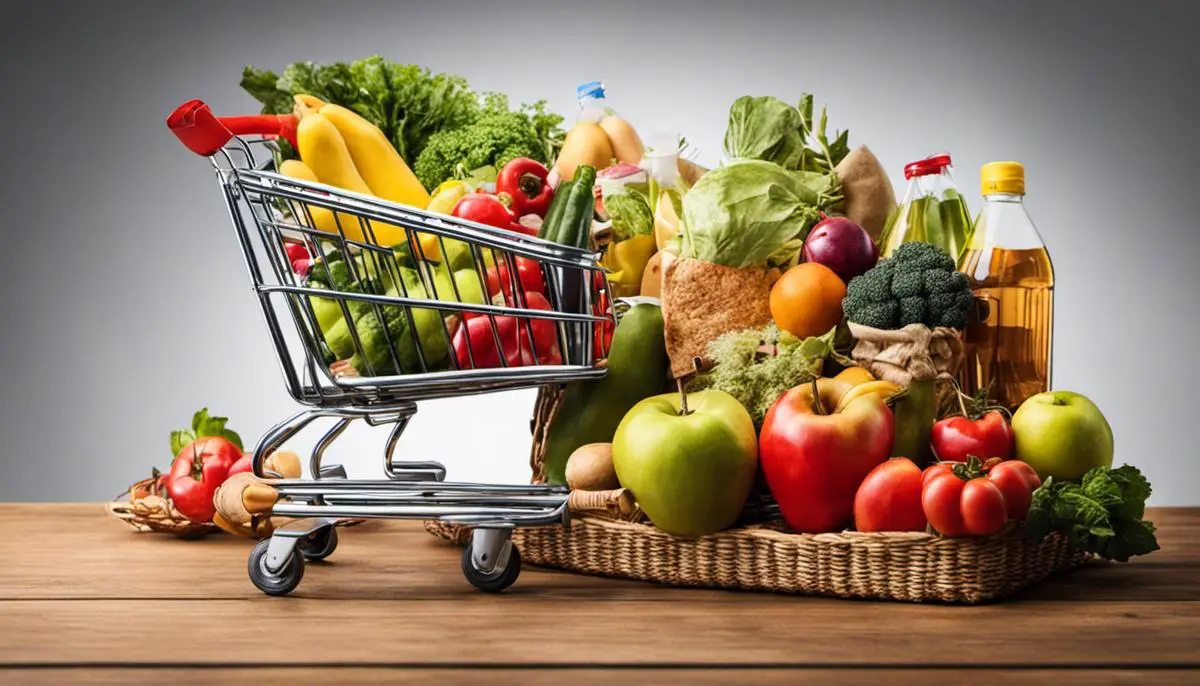Smart Ways to Slash Your Grocery Bills
Grocery shopping can be quite a dent to your wallet, especially if you lack a cogent strategy towards it. It’s paramount to understand that saving on groceries goes beyond merely hunting discounts and deals; it requires comprehensive planning and organization as well as a thorough understanding of your needs. This encompasses knowing what to put on your grocery list and strictly adhering to it, strategically planning your grocery trips to reduce impulse buying, and understanding ‘need to buy’ versus ‘nice to have’ items. Furthermore, it’s about mastering the art of effective meal planning to eliminate wastage and avoid unnecessary purchases. Also, you don’t want to flippantly toss coupons aside or disregard them; they could be the ticket to your next big save!
Planning and Organizing Your Groceries
Title: Harnessing the Power of Planning to Save Big on Your Family’s Grocery Bills
The warm aroma of a home-cooked meal can make a suburban house feel like a Grandma’s country kitchen. However, the rising costs of groceries can sometimes make these comfort food moments feel a tad bit expensive. If you’re yearning for a way to trim the fat from your expenses without sacrificing the quality of your family’s meals, planning and organizing might be the way to go!
Grocery shopping without a plan is almost like setting sail without a compass—it can lead to costly meanderings. By investing a little time in planning meals ahead and creating a meticulous shopping list, the home can turn not just into a hub of delightful family feasts but also a platform for smart savings.
1. Plan Your Meals by the Week or Month
One effective way to start saving money is by meal planning. Check out your family calendar and align your meal planning accordingly. Try to incorporate dishes that can be prepared from similar ingredients to help cut costs. Aligning meals with sales and seasonal produce can also translate into significant savings.
2. Create Detailed Shopping Lists
Now you’ve got your meal plan in place. The next step? Creating a detailed shopping list. The beauty of a well-thought-out list is that it’s a faithful compass, guiding you in the maze of enticing store aisles towards what you need, helping curb unnecessary, impulse buys.
3. Optimal Use of Leftovers
Let’s face the truth – leftovers often get a bad rap. However, with a little bit of creativity, they can be tastefully transformed into exciting fresh meals. Incorporating the use of leftovers into your meal plan saves money and cuts waste.
4. Freeze and Preserve
What do you do with sales or seasonal bulk buys? Make use of the fridge! Flash freezing fruits and vegetables, canning, or preserving can make these goodies last for months. This is an easy path to having less expensive, home-cooked meals the family is sure to relish.
5. Practice Portion Control
Cooking in bulk does save time, but sometimes it might lead to wastage. Learning portion control keeps waste at bay and ensures costly ingredients aren’t thrown away.
6. Rotate Your Pantry
Rotating your meals to ensure everything gets used before the expiration date is easy on the pocket. It prevents wastage and you won’t find yourself throwing out expired cans of food or stale packets of pastas anymore.
7. Shop With a Clear Mind
Do remember – shopping on an empty stomach or when you’re tired could lead to unnecessary spending! Make sure you shop with a clear mind and a full stomach.
There may be more ways to save on groceries, but cultivating a habit that nurtures planning, organization, and mindful shopping can start showing you results faster than you expect. Remember – when the family’s shopping habits change, things truly start to happen. Smart grocery shopping can usher the way to not just a healthier home, but a wealthier one too!

Understanding Sales, Discounts, and Coupons
Harnessing the Power of Sales, Discounts, and Coupons for Savvy Grocery Savings
When it comes to building and maintaining a healthy family lifestyle, spending wisely often becomes a focal point. As parents, it’s our responsibility to stretch every dollar to provide the best for our children and keep our household running smoothly. This is where sales, discounts, and coupons move from a neat idea to a practical tool in our arsenal.
Becoming a grocery guru starts with understanding the rhythm and flow of supermarket sales. It is no secret that grocery stores operate on a rotating sale cycle, which often lasts about 6-8 weeks. When you figure out the timing, you can stock up on the items you use most during the sales interval. For instance, if your family loves pasta, snatch up enough when it’s on sale to last until the next cycle. Keeping your pantry well-stocked this way means saving money in the long run.
Couponing, once a hobby for only the super-savvy, has now become a regular grocery shopping strategy for millions of families. However, effective couponing isn’t just about clipping all the savings you can find. Focusing on the items that your family frequently uses will maximize the benefits of couponing. Nowadays, you don’t need to cut out physical coupons; thanks to technology, digital coupons and apps make it easier and faster. Apps from stores like Target, Whole Foods, and Kroger load discounts directly onto a smartphone, accessible at the touch of a button.
Remember to pair sales with coupons whenever possible for the most significant savings. Say canned beans are on sale for 70 cents a can, and you have a coupon for 50 cents off three cans. By using that discount during the sale, each can of beans costs around 53 cents, an impressive reduction from the regular price of a dollar or more.
In addition to routine sales and coupons, keep a keen eye out for clearance items, especially for goods that have a longer shelf-life or can be frozen. This is a golden opportunity to stock up on perfectly good items that might be discounted due to packaging changes, overstock, or near expiration dates.
Last but not least, consider joining store loyalty programs. Many grocery stores offer reward programs where you can earn points for every dollar spent. These can later be redeemed for discounts on future purchases, thus helping you maintain those grocery costs within budget.
In a nutshell, when we embrace the prowess of sales, discounts, and coupons, our grocery shopping trips become detectives on a mission to unmask potential savings. It might take some time initially to get into the swing of things, but with practice, you’ll find your grocery bills shrinking while your pantry grows. Not only will your wallet thank you, but you can also take pride knowing you’re manifesting the best for your family through wise utilization of resources. Happy shopping, savings, and savvy spending!

Exploring Alternative Shopping Venues
“Thinking Outside The Grocery Isle: Exploring Alternative Shopping Venues To Save Money”
In the bustling grocery aisles, saving money can often feel like a strategic game. After utilizing careful meal planning, detailed list-making, and shrewd use of leftovers, what more can be done to further plump up the family wallet? Well, one answer might just be found beyond the traditional supermarket limits. Chilled out farmer’s markets and snappy online grocery stores can act as potential companions in the quest to save money. Here’s how:
Pour some love into farmer’s markets. Often, local farmers gather in city centers or parks, presenting a beautiful array of fresh produce, dairy, and other farm-to-table products. Not only do you get the freshest seasonal produce, but prices can be surprisingly affordable compared to supermarkets. Negotiations aren’t unheard of at these venues either. Interacting directly with the producer, one can haggle the prices down a notch or two – just remember, these farmers work hard for their produce.
Rediscovering the ancient tradition of bartering can also be possible at farmer’s markets. That homemade jam or garden-grown tomatoes could be worth more than one might think! These practices can be fulfilling in more ways than one, nurturing a sense of community and supporting local growers. Moreover, the minimization of the carbon footprint involved in food transportation can be the cherry on top of the delightful “farm-shopped” experience.
Switching the gaze to our tech-savvy future, online grocery shopping has been gaining robust momentum, especially amidst the recent pandemic. And why not? You can shop from the comfort of your living room, avoiding impulse buys and staying laser-focused on the shopping list. The drag and drop nature of online shopping sanctifies the concept of ‘only buy what you need.’ Plus, many online grocery platforms offer first-time user discounts, flash sales, and exclusive online deals that could help cut costs drastically.
Subscribing to these online platforms could lead to a bundle of monetary benefits. Often, these services come with the luxury of cash-backs and reward points that can be redeemed on subsequent orders. Timed right, one could use these benefits to stock up on pantry and household staples.
Though delivery charges might seem like a blocker, several online grocery stores offer free delivery on reaching a minimum purchase amount. Some may also offer a reasonable annual membership for unlimited free deliveries – a sound investment for regular online shoppers.
Having considered the considerable perks, let’s not forget the underlying golden rule – informed comparison. Prices can vary significantly among different farmer’s markets or online grocery stores. Therefore, spending a few moments comparing prices before making final purchases could result in noteworthy savings.
Stepping out of the regular grocery aisle may require a smidgen more time and effort. Still, it’s in uncovering these novel corridors of shopping that we can unearth some substantial savings, bridging the gap between hearty, wholesome meals and a healthier bank balance. It’s all about exploring the possibilities, rethinking our traditional boundaries, and opening ourselves to the idea of trying something new. And that, dear readers, could be the secret spice to a more frugal lifestyle!

Navigating discounts, sales, and coupons is another critical skill for grocery budget wisdom. Through unmasking the best deals, discerning the ideal time to stock up on certain groceries, and using your coupons smartly, you could be smiling your way to a significantly reduced grocery bill. The key lies in unraveling those befuddling grocery store price tags and weighing the merits and demerits of buying in bulk. Evidently, being an informed shopper is not solely about traditional food stores; it’s also about considering alternative shopping venues. Whether it’s sifting through farmer’s markets, discount grocery stores, or online platforms, our goal should be primed on finding the best bang for your buck. Remember, saving on groceries can be a lifestyle, your lifestyle.
